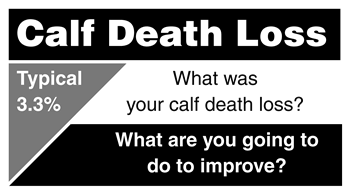
Kris Ringwall
Beef Talk
Producers should take a serious look at the reasons each calf died and figure out how to prevent death next time.
The end of May will be busy at the Dickinson Research Extension Center. The cows have been turned out on cool-season grass, and the yearlings need to be worked.
The yearling steers are vaccinated and have been turned out for summer grazing or sent to the feedlot. The center typically sends half the yearling steers to grass and the other half directly to the feedlot.
 The yearling heifers also need to be processed, the replacements sorted off and the remaining heifers spayed and sent to grass.
The yearling heifers also need to be processed, the replacements sorted off and the remaining heifers spayed and sent to grass.
It certainly is a good feeling when the winter pens or paddocks are empty, and the cattle are on grass.
There is that subtle peace of mind once the stock are unloaded and settled into their grazing routine. However, don’t dream too long. This is a good time to reflect on last year’s calving season.
Just how many of those calves did you turn out to pasture? Not to bring up the tough times, but not long ago the cows were calving, the temperature was cold and the mud was deep. Experience would say that you do not want to ask managers how calving went because the response would be less than objective as they reflect on the bone-chilling cold and lack of sleep.
However, one should ask at the conclusion of the calving season and spring turnout just how well the calving season went. Now is perhaps the best time to make a few notes on what to change for next year.
The first step is to list the dead calves. I hope your cattle are in a record system that will provide that information. If not, grab a piece of paper and pencil and list the calves. Although painful, it is important because a producer needs to count every single calf that died. The calving notebook should have the dead calves listed, along with a brief notation on what happened to each one. Until all the calves are listed, the shock of lost opportunities has not had its full impact.
Currently, the Cow Herd Appraisal Performance Software (CHAPS) five-year rolling average for percentage of calf death is 3.3%. The math is fairly simple to determine the percentage. A producer adds up the number of calves that died and divides that by the number of cows that calved. Fortunately, although not always timely, a few sets of twins show up, and grafting calves from one cow to the next is a common management practice.
As a side note, buying calves is not encouraged because the potential to expose the herd to new health issues is real.
Now back to the question of how many calves were lost. The producer should take a serious look at the reasons why each calf died and what could be done next time to save it. In reality, a calf death loss of zero probably is not realistic. Knowing one’s calf death-loss rate can stimulate managerial thinking and open up doors for improvement, particularly if the operation exceeds the average of 3.3%.
The search for answers is important. Although a particular reason may not surface, a general acknowledgment of the actual number will facilitate potential change. Winter quarters often are a mix of several problems confounded by overcrowding, problems in cow-calf pair management or lot conditions.
As the cattle are readjusting to summer pasture, now is the time to identify those winter stress points and fix them.
May you find all your ear tags.

Editor’s Note: Kris Ringwall is a North Dakota State University Extension Service livestock specialist and the Dickinson Research Extension Center director. For more information, contact him at 1041 State Ave., Dickinson, ND 58601, or go to www.ag.ndsu.edu/news/columns/beeftalk/.
[Click here to go to the top of the page.]





